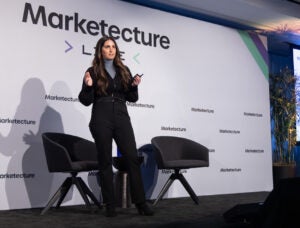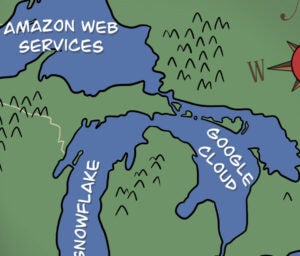 “Data-Driven Thinking” is written by members of the media community and contains fresh ideas on the digital revolution in media.
“Data-Driven Thinking” is written by members of the media community and contains fresh ideas on the digital revolution in media.
Today’s column is written by Simeon Simeonov, founder and chief technology officer at Swoop.
The biggest and most insidious myth of programmatic advertising today is that ad prices are a proxy for some universal notion of quality that aligns advertiser, publisher and consumer interests.
The argument is simple: An advertiser would be willing to pay the most to place the best ad, which engages consumers in the best possible way. It is easy to see why the argument is wrong.
It comes down to externalities, or side effects that affect market participants but are not taken into account by ad prices. In ad tech, negative externalities abound, masking the true cost of placements and causing long-term damage to the entire ad tech ecosystem. It’s a problem that won’t be addressed in programmatic until transparency improves beyond price, which requires significant enhancements of the OpenRTB protocol.
Consider a single-slot RTB auction on a page about back pain where some very different ads have the same net bids: a banner ad, which has 50% chance of being part of a malvertising campaign; a complex dynamic ad whose execution would slow the loading of the page; a behaviorally targeted ad whose delivery would allow multiple third parties to cookie and target the user on other sites; an autoplay video ad about dieting; a retargeting ad for windshield wiper blades; and a contextually targeted ad for back pain management.
The ads are identical from the standpoint of the auction and are equally likely to win the auction, other things being equal. If you were the publisher and could choose which ad to accept based on the information above, which one would you pick?
Every publisher I’ve asked this question would choose the highly relevant contextual ad. Consumers also have strong preferences. The majority do not like autoplay video ads and the retargeting ads they find “creepy” because they “follow them around.”
That’s it in a nutshell: Quality, as measured by advertisers and expressed through bid prices, doesn’t map to quality as measured by publishers or consumers.
Negative Externalities
The issue here is one of externalities – and there are many types of negative externalities in ad tech. Programmatic ad buying has made malvertising easier to deliver, for example, as there is less human review. Another is load times: The New York Times observed ad tech significantly slowing down mobile pages, especially due to video ads. Meanwhile, Flash ads consume a lot of resources. Some JavaScript ads misbehave and hoard processing, slowing down other dynamic page components.
These are the obvious types of negative externalities that affect publishers. There are also subtler ones, such as data leakage, which some would characterize as data theft. When an ad delivered to a user on site X enables the advertiser to target the same user on site Y, site X “leaks” its targeting signal and loses pricing power. That’s the foundation of behavioral targeting and a big component in declining CPMs, especially for publishers in high-value verticals, such as auto, finance, health and travel.
There also are externalities related to data privacy, especially when it comes to location and personally identifiable information.
Asymmetry And RTB
RTB apologists justify a system where the highest bidder wins using the banner of “market efficiency.” In economics and finance, an efficient market is one where price always fully reflect available information.
It is no secret that RTB auctions involve imperfect and asymmetric information. Publishers cannot and do not share everything they know about their users with the exchange. Advertisers cannot and do not share all the information that goes into making a bid with the exchange either. They cannot share because the OpenRTB protocol’s APIs are too narrow and offer no mechanism for this information to be shared. They do not share because they want to use information to their advantage. Information asymmetries and externalities lead not to market efficiency but to market failure.
We can go one step further in debunking the myth that ad prices align advertiser, publisher and consumer interests. There is a celebrated result in economics – the Myerson–Satterthwaite theorem – which states that when market participants have secret and variable information about the value of a good, there is no trading mechanism where some parties don’t trade at a loss. In this case, an ad placement opportunity would be the “good.” So long as there is secret information being used by some parties, it is impossible to design a programmatic auction that fully aligns advertiser and publisher interests, let alone consumer interests.
There are many benefits to programmatic advertising. There are also many negative externalities caused or perpetuated by programmatic advertising that affect the entire industry, including slow-loading pages, declining consumer engagement and increased ad-blocker usage. We won’t be able to improve the situation until we accept the fact that ad prices are not an accurate, aligning signal between advertisers, publishers and consumers.
Right now, the problem is enshrined in the OpenRTB protocol. I hope future versions of OpenRTB evolve to communicate information beyond price, such that the externalities can be internalized and programmatic markets can become more efficient in reality, as opposed to just marketing speak.
Follow Simeon Simeonov (@simeons), Swoop (@Swoop123) and AdExchanger (@adexchanger) on Twitter.












